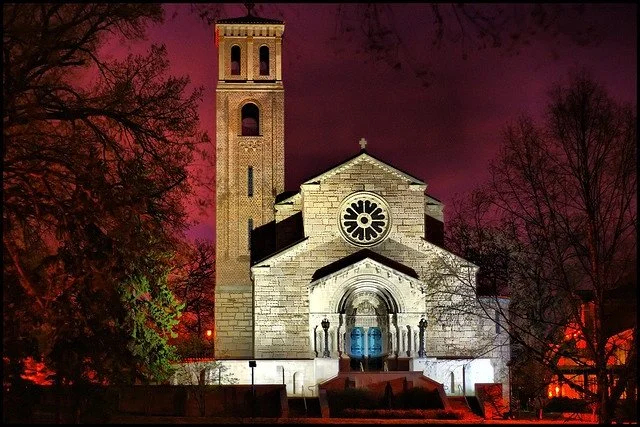The History Kept Within Fontbonne
The St. Catherine fashion collection
Did you know, buried in the depths of Fontbonne Hall, there’s a secret closet– or not so secret, since the door is clearly labeled ‘HISTORICAL FASHION COLLECTION’. Inside, there are dozens of metal cabinets containing everything from 1910s undergarments to ‘90s leather jackets. The St. Kate’s historical dress collection is surprisingly expansive for a college of our size, and yet many people don’t even know that it exists.
Coming into existence shortly after the school’s founding in 1905, pieces are collected from private donors, or in rarer occasions, mass donations from organizations like the O’Shaughnessy Theater on campus, which generously donated some of its authentic historical pieces to the collection. The pieces are carefully preserved in the climate controlled room, and handled while wearing gloves. The collection is overseen by Jacqueline Parr, an Assistant Professor of Fashion Design and Merchandising, and pieces are often used for the education of fashion classes.
This summer, an exciting event is taking place for the collection. St. Kate’s has been selected as the recipient of the Costume Society of America’s (CSA) 2022 Angels Project Grant. The Angels Project provides support to a collection located near the current year’s CSA national symposium. CSA members volunteer to create a one-day intensive plan to help meet the most urgent needs of the collection, as well as train staff and volunteers in correct conservation practices and photograph and catalog the collection.
While it would spoil the surprise to show which pieces will be seen in The Evolution of Color, here’s a small sample of the many interesting pieces the collection has to offer.
Despite looking like a dress that could be worn today, this red dress is actually dated between the 1930s and 40s. The sleeveless top is slightly against the norms of the decade, but mimics the popular pinafore look. The simple A-line skirt and rouching are very characteristic of the time.
This dress from the 1960s embodies the most well known silhouette of the decade, with the dress hanging loosely around the body. These straight dresses went through many evolutions with minute changes, being known as smock, sheath, and skimmer dresses interchangeably in advertising. The structureless shapes of the ‘60s draw a sharp contrast to the tailored ‘50s.
The ‘70s are a mish-mash fashion decade, with looks from across 50 years combining to create a wholly new style. This coat and dress set mirrors the loose fit characteristic to the ‘60s, but the ‘70s saw white become trendy for womens evening wear, and the rising popularity of turtleneck pieces can also be seen in this dress.
This 1980s leather jacket represents a departure from tradition. Sophistication meant fur, but forward thinking was represented by leather. This jacket is actually a very dark green, which was also a new innovation and trend of the ‘80s.
While the Angels Project is not open to the public, certain pieces will soon be available for viewing. On the second floor of Fontbonne, the historical dress collection utilizes a large display case for rotating seasonal exhibits, and a new one will soon be available. The Evolution of Color examines the different ways the color blue has been expressed in fashion throughout history, and will display pieces from the 1910s through the 1980s. The exhibit will open in early May.










